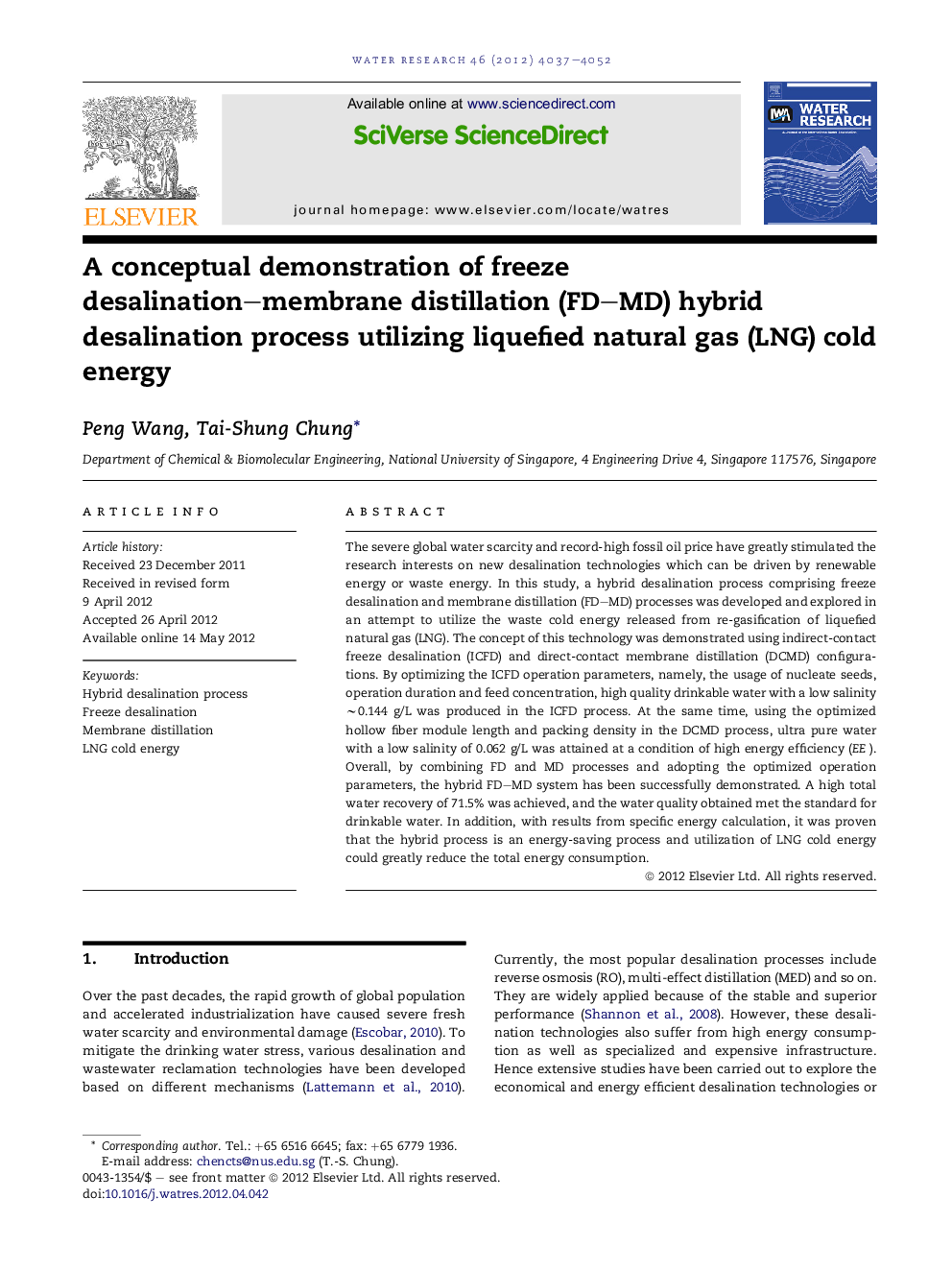| Article ID | Journal | Published Year | Pages | File Type |
|---|---|---|---|---|
| 4482353 | Water Research | 2012 | 16 Pages |
The severe global water scarcity and record-high fossil oil price have greatly stimulated the research interests on new desalination technologies which can be driven by renewable energy or waste energy. In this study, a hybrid desalination process comprising freeze desalination and membrane distillation (FD–MD) processes was developed and explored in an attempt to utilize the waste cold energy released from re-gasification of liquefied natural gas (LNG). The concept of this technology was demonstrated using indirect-contact freeze desalination (ICFD) and direct-contact membrane distillation (DCMD) configurations. By optimizing the ICFD operation parameters, namely, the usage of nucleate seeds, operation duration and feed concentration, high quality drinkable water with a low salinity ∼0.144 g/L was produced in the ICFD process. At the same time, using the optimized hollow fiber module length and packing density in the DCMD process, ultra pure water with a low salinity of 0.062 g/L was attained at a condition of high energy efficiency (EE). Overall, by combining FD and MD processes and adopting the optimized operation parameters, the hybrid FD–MD system has been successfully demonstrated. A high total water recovery of 71.5% was achieved, and the water quality obtained met the standard for drinkable water. In addition, with results from specific energy calculation, it was proven that the hybrid process is an energy-saving process and utilization of LNG cold energy could greatly reduce the total energy consumption.
Graphical abstractFigure optionsDownload full-size imageDownload high-quality image (164 K)Download as PowerPoint slideHighlights► We designed a novel hybrid desalination process. ► Process consists of freeze desalination and membrane distillation. ► We utilize the LNG waste cold energy in hybrid process. ► Indirect-contact freeze desalination and direct-contact membrane distillation. ► High quality water is produced with a recovery of ∼71.5%.
